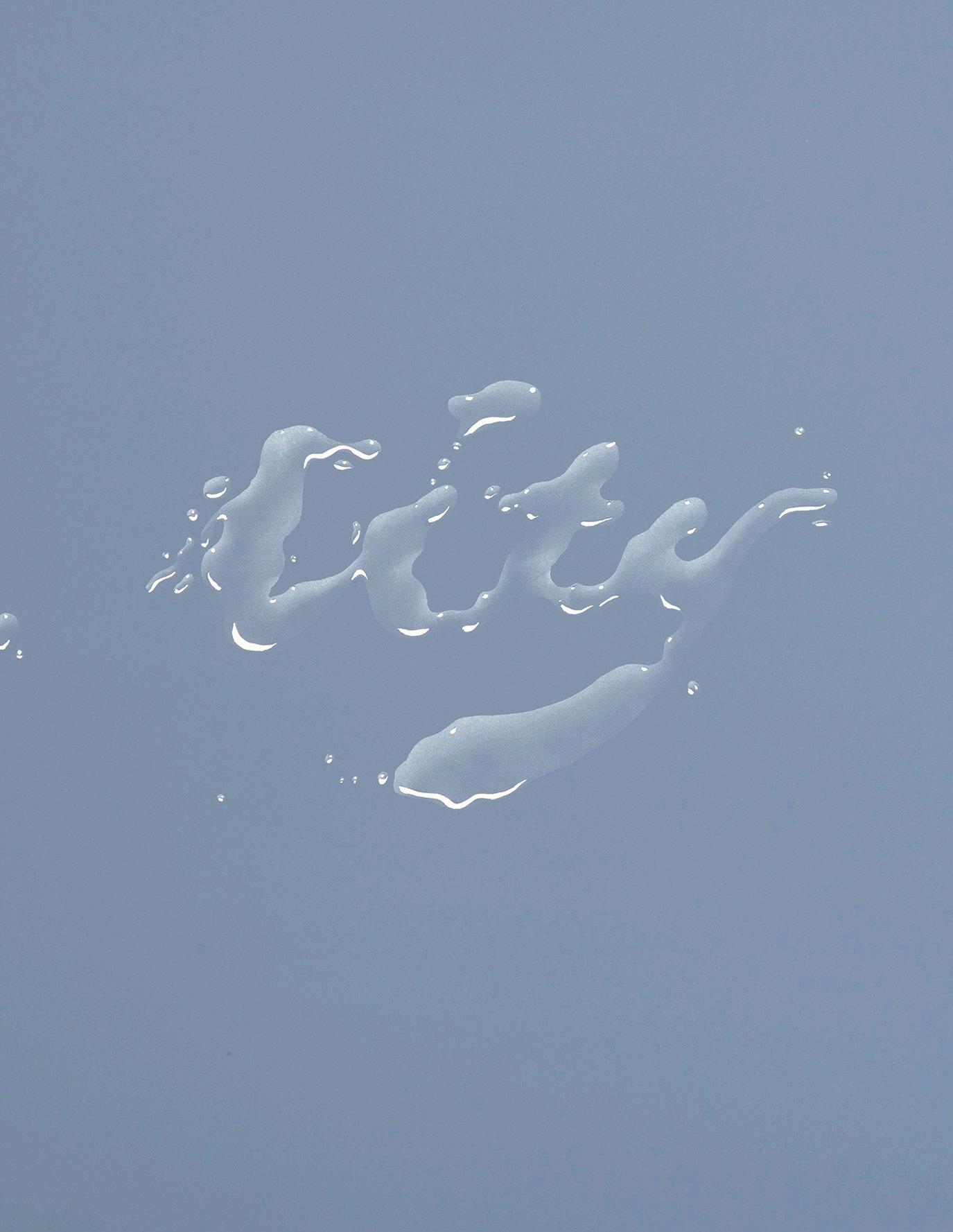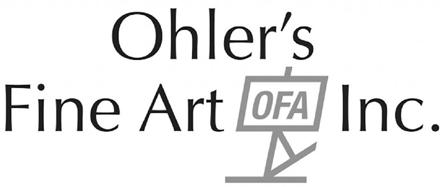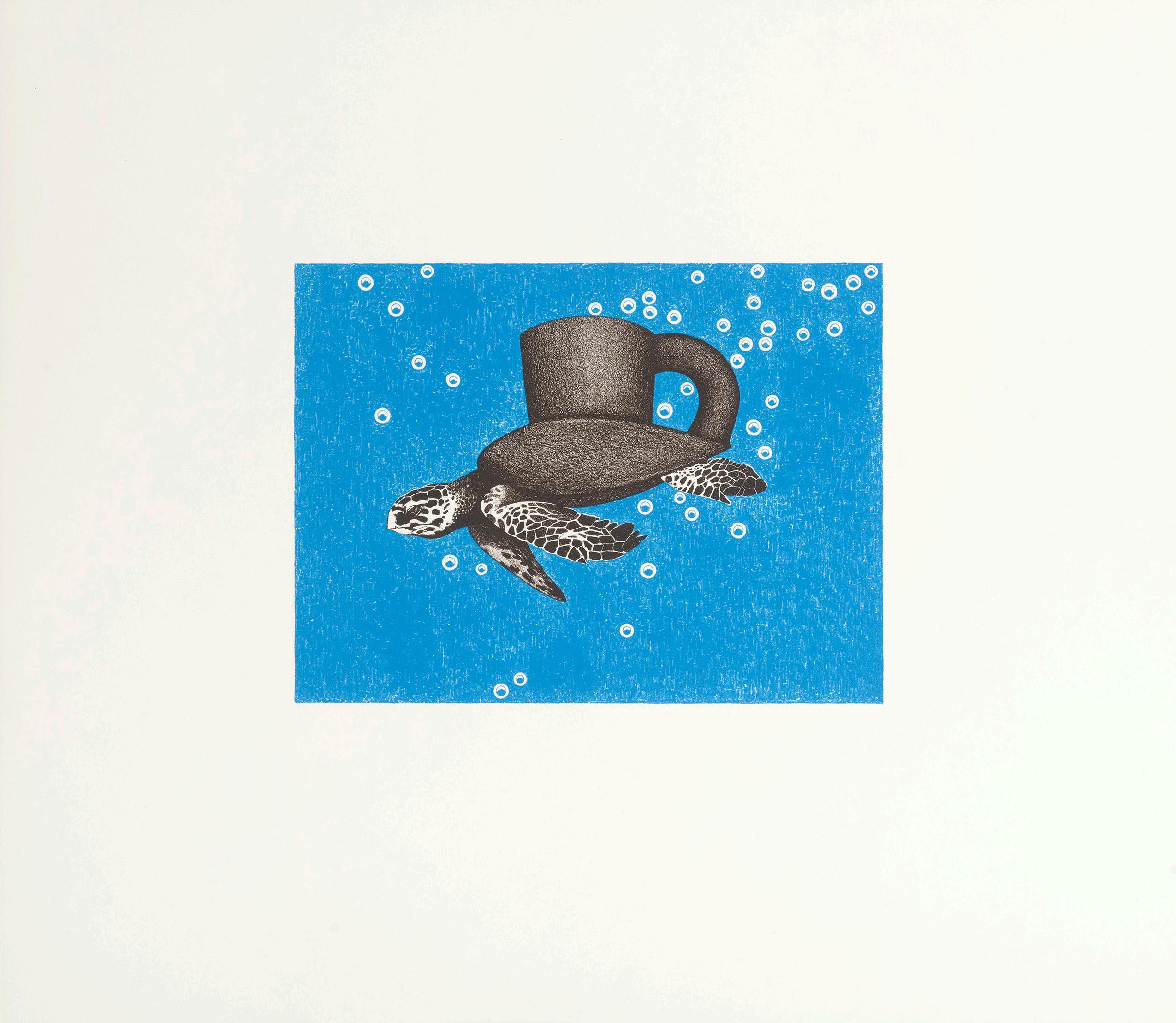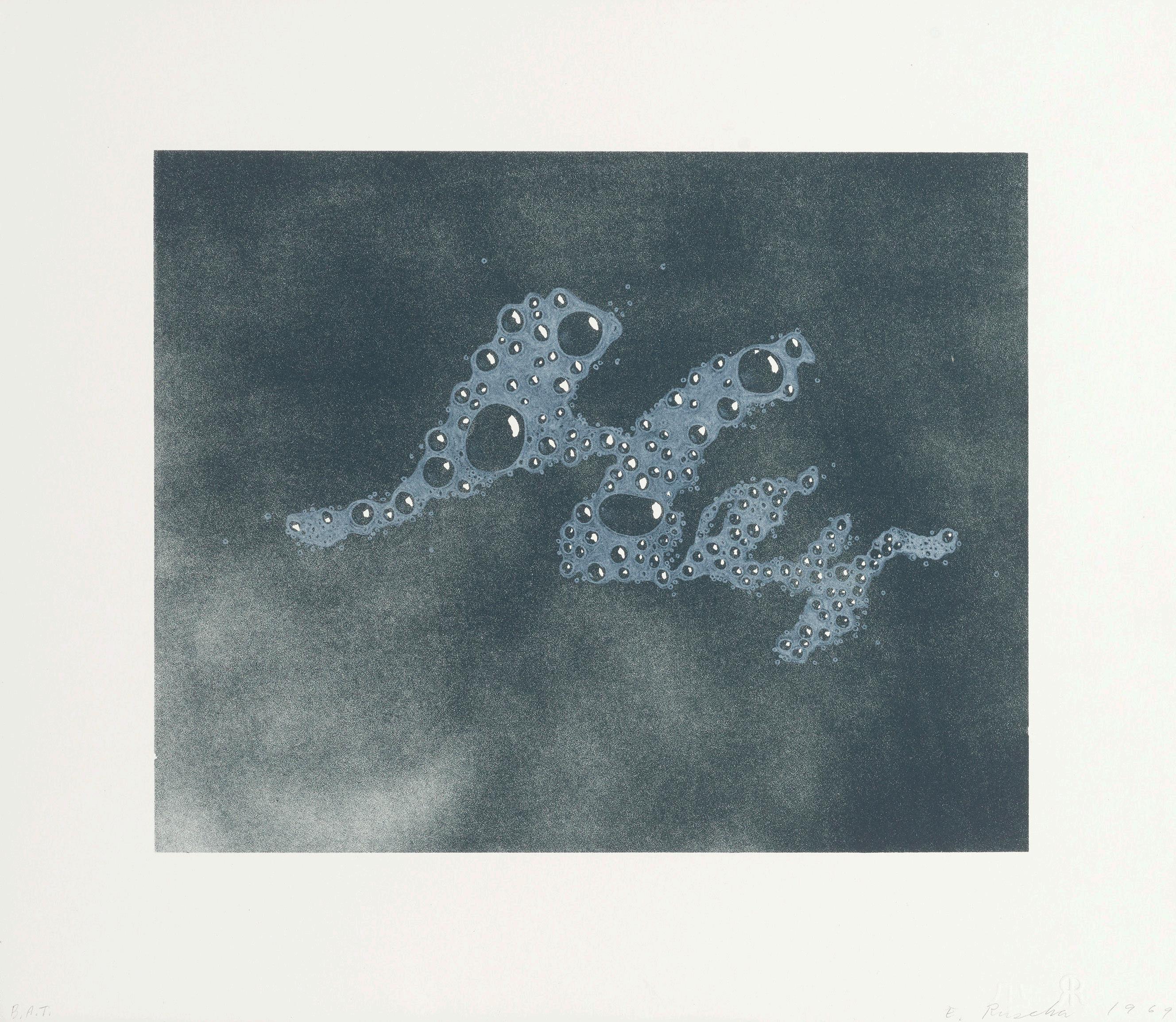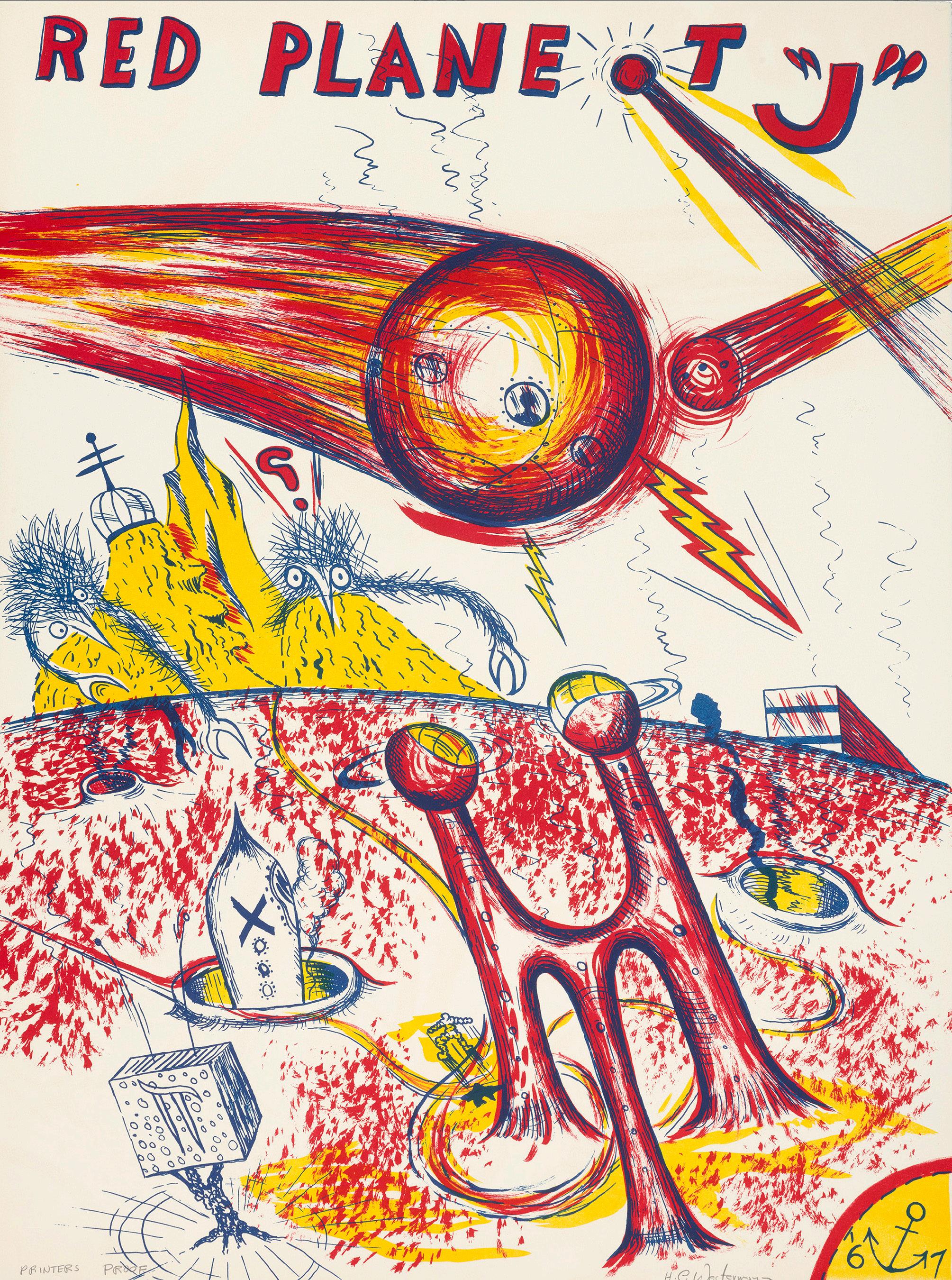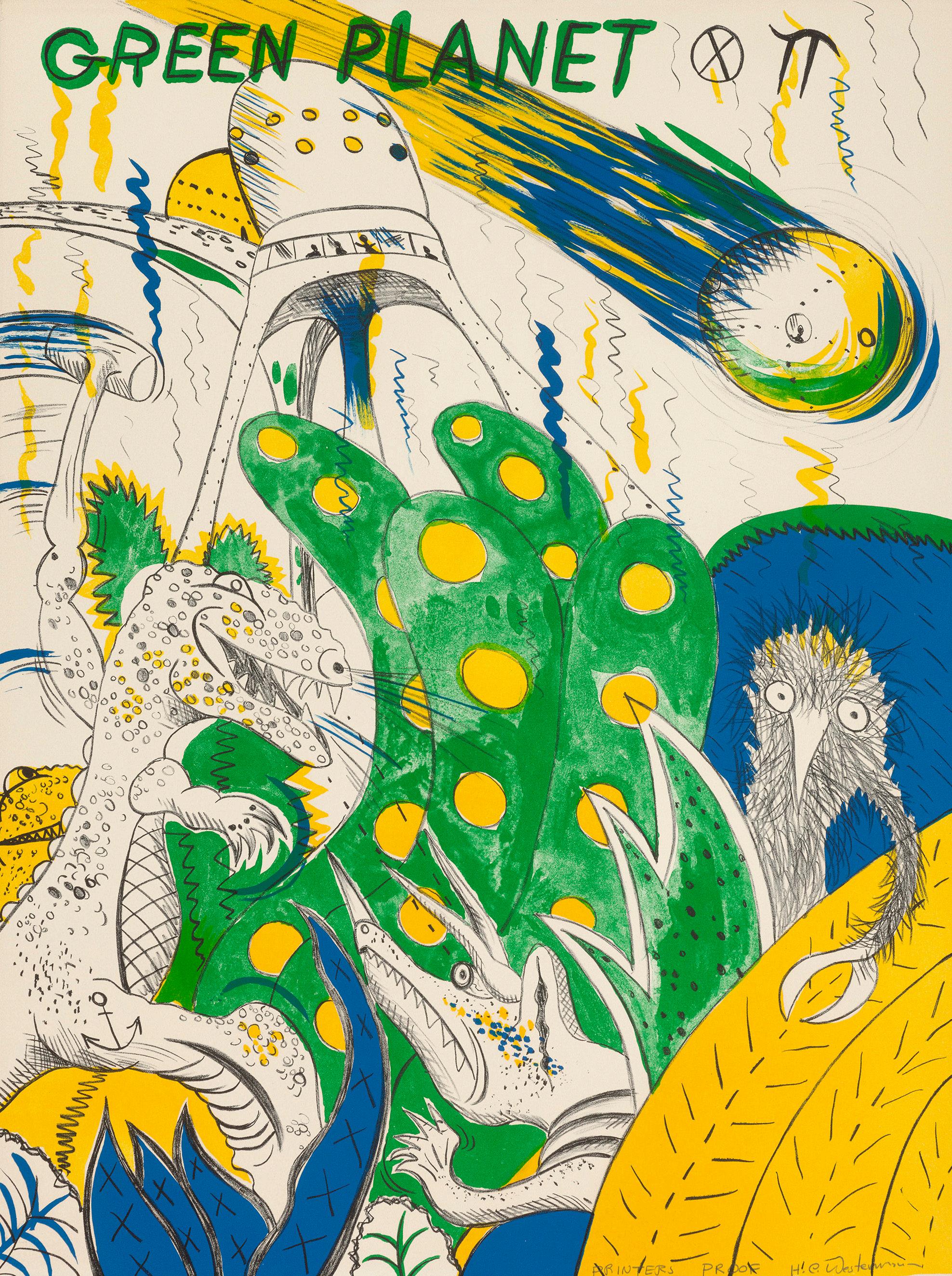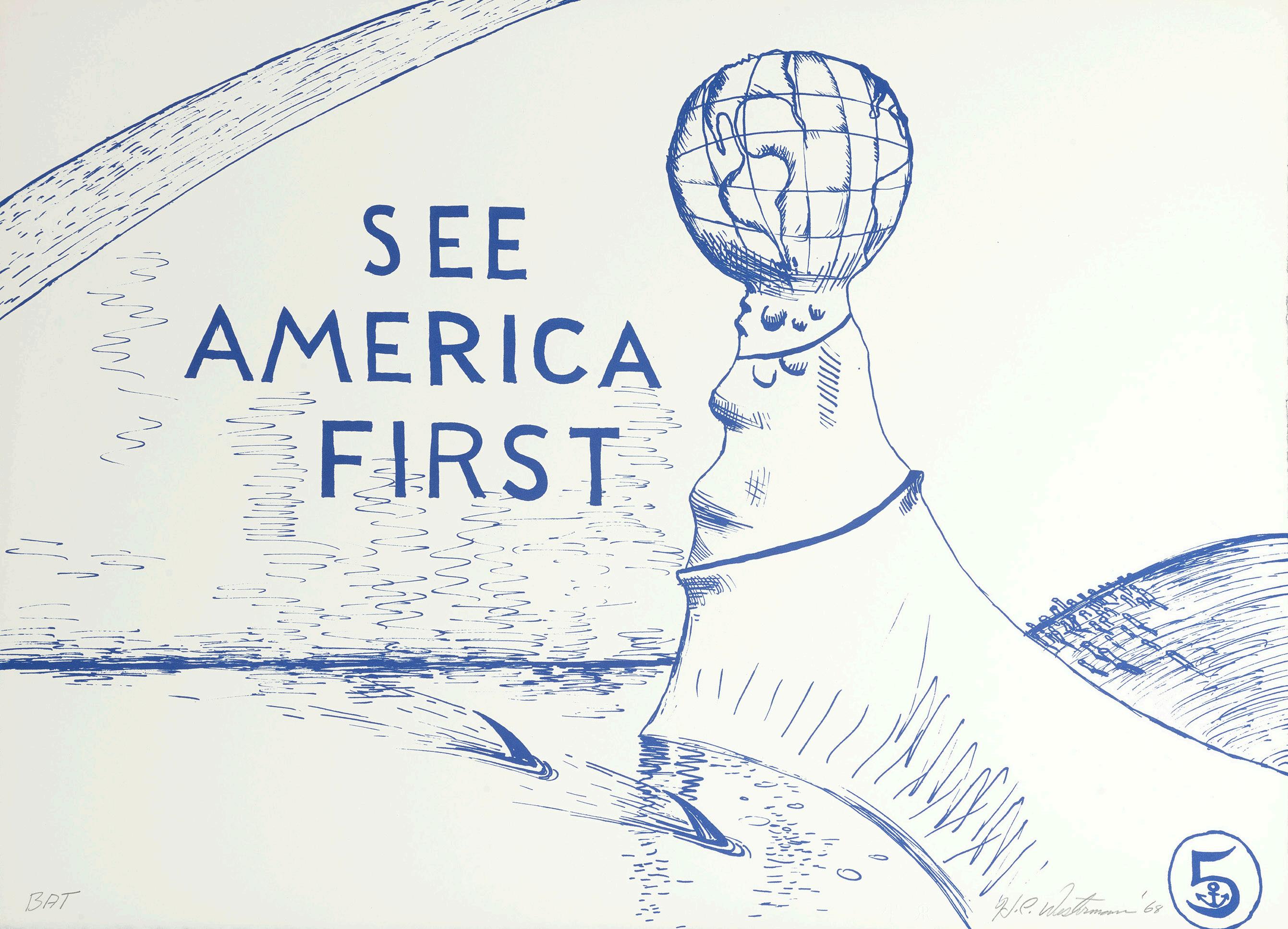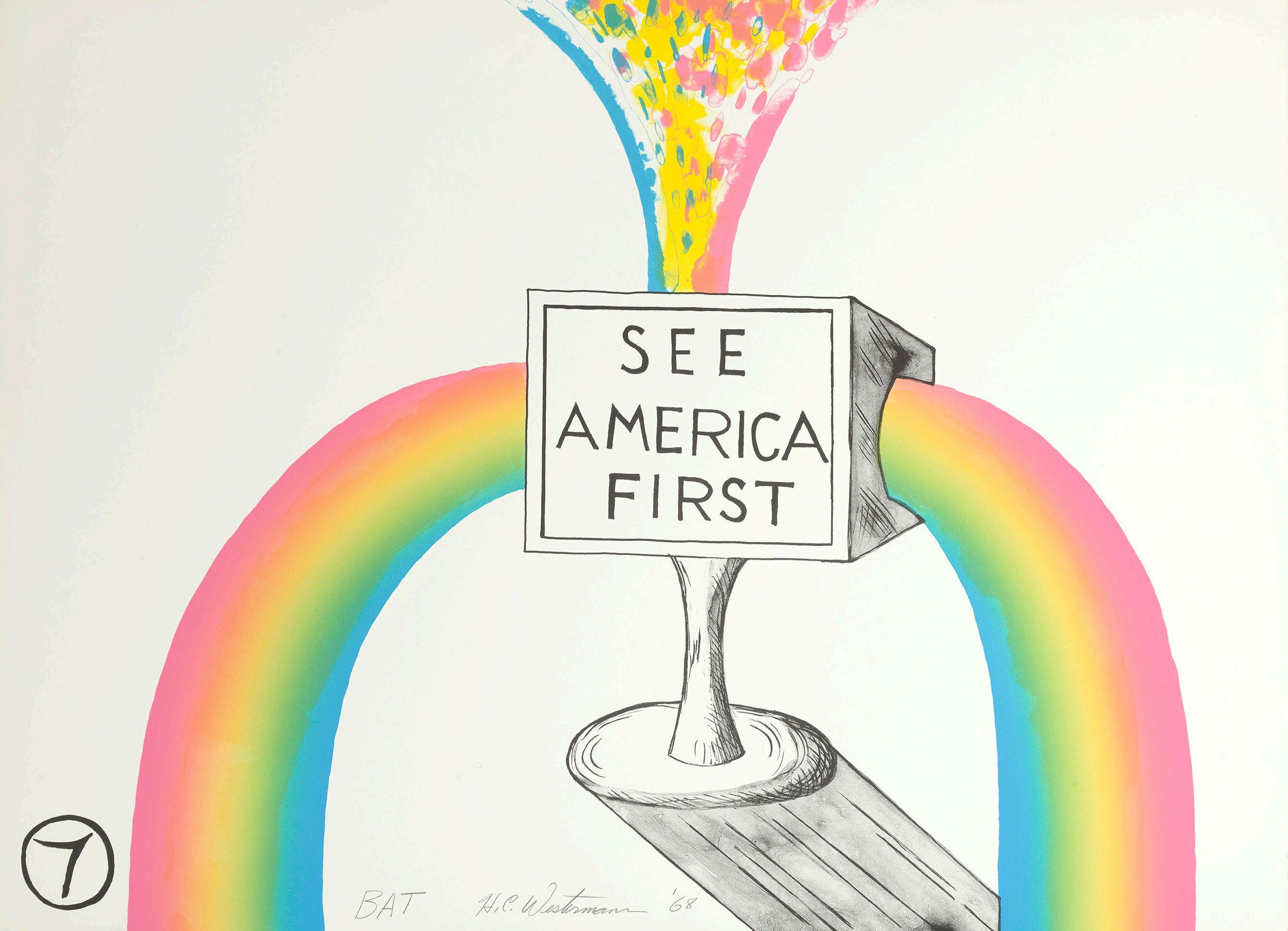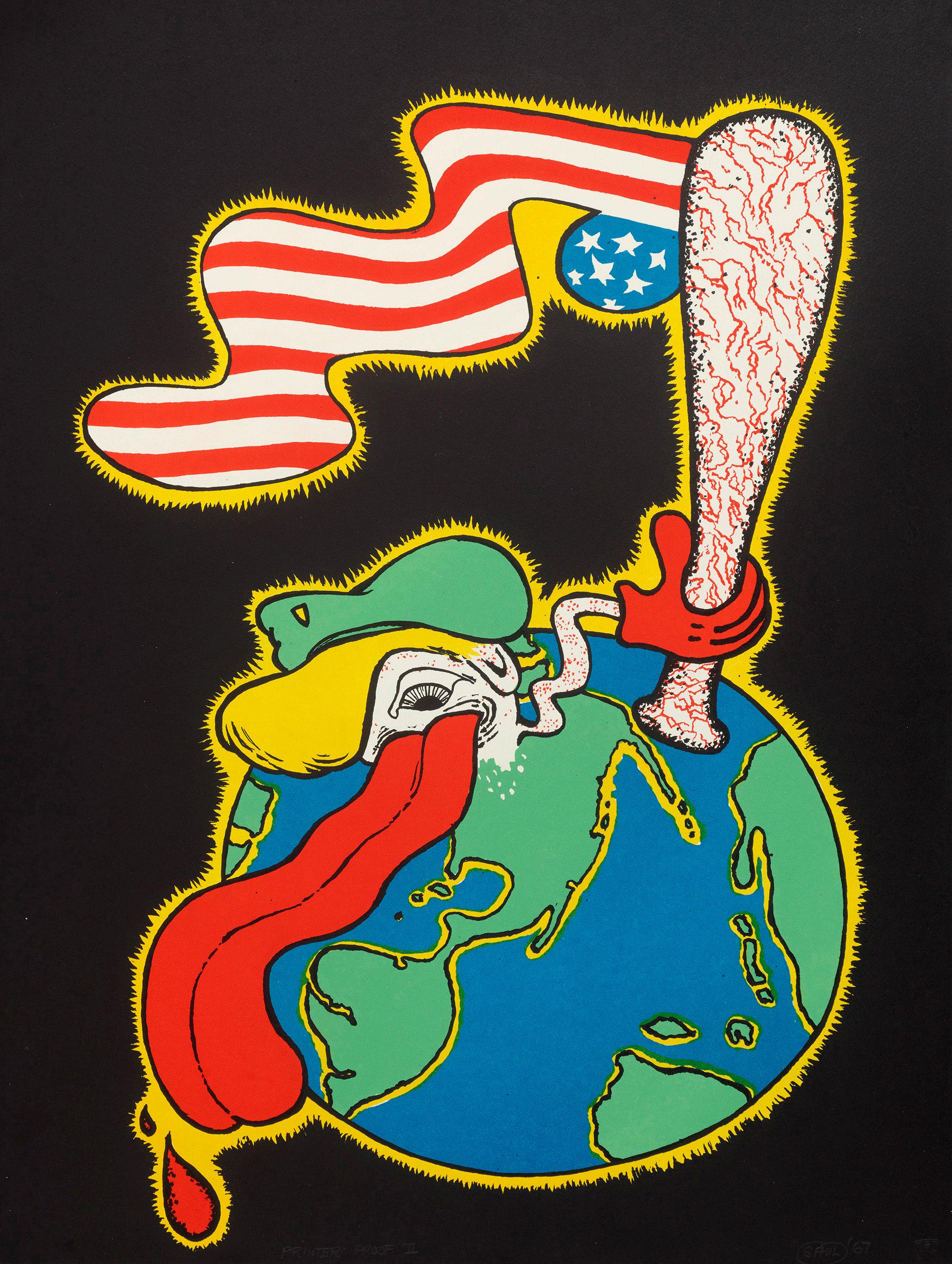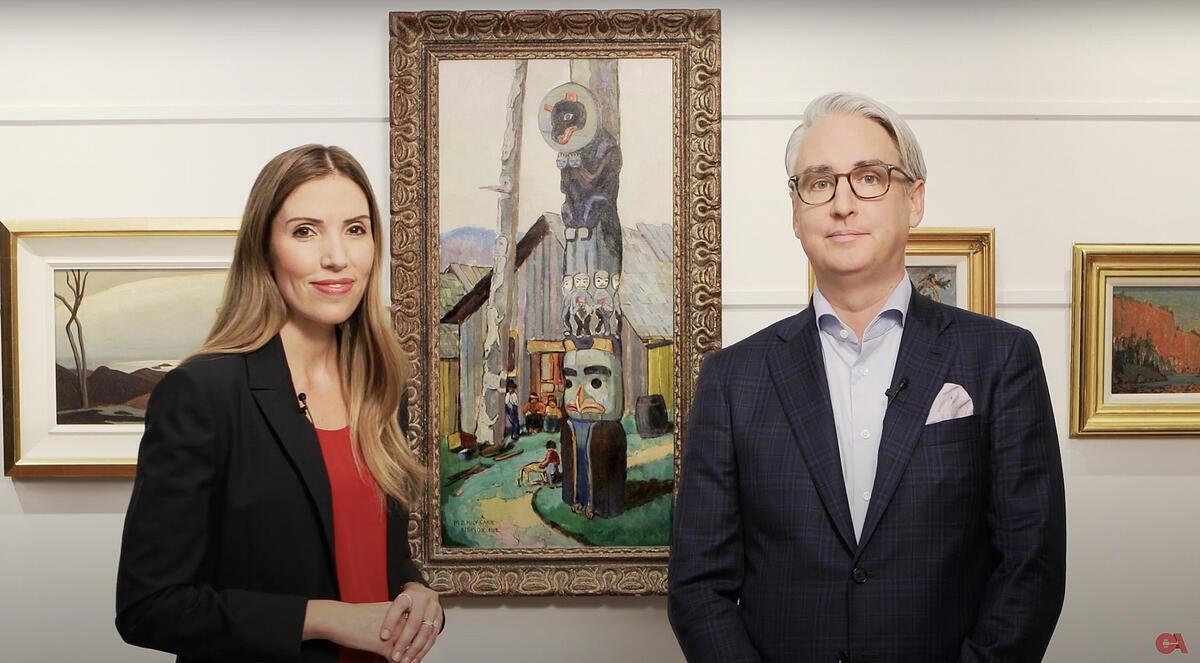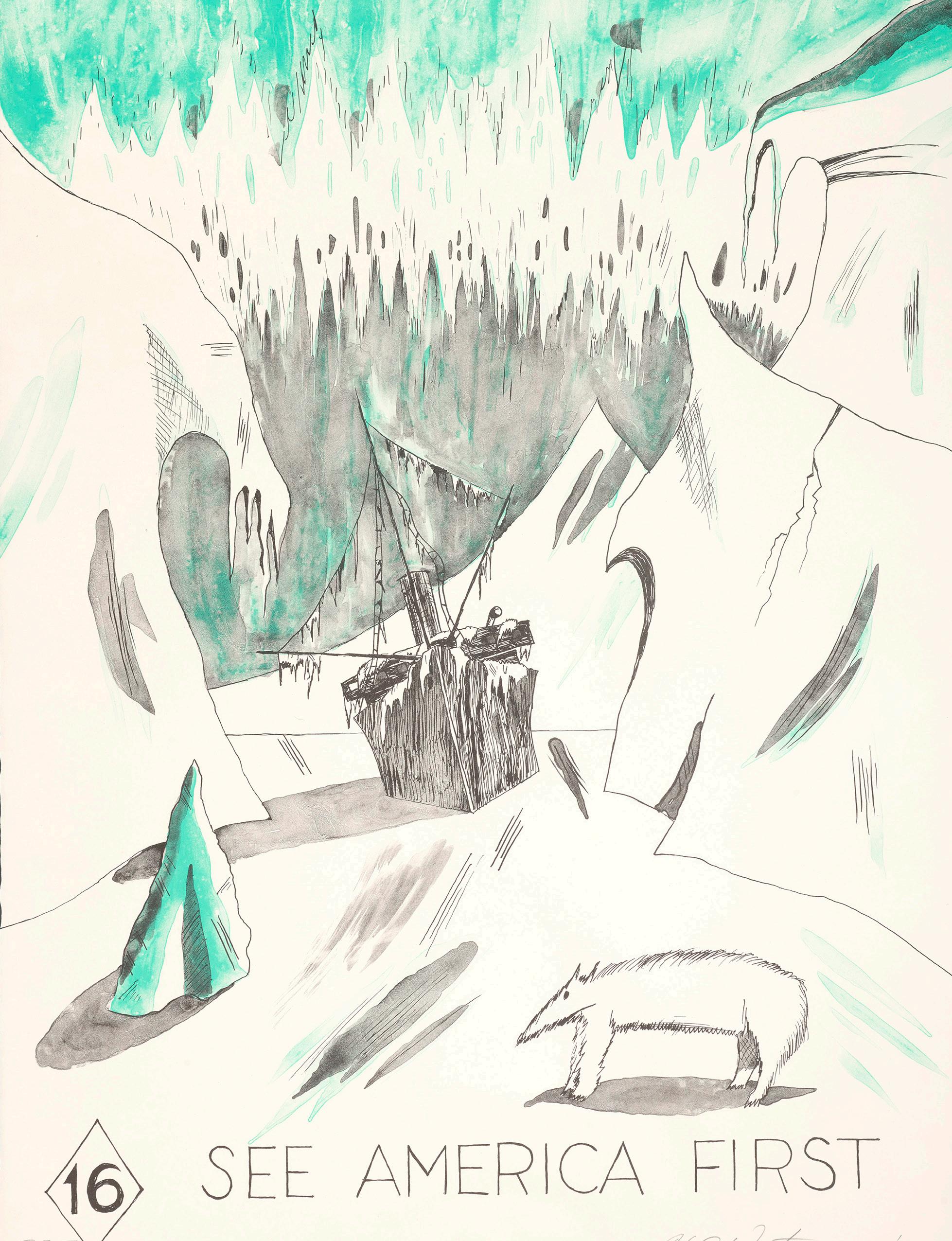ABOUT THE COLLECTION: ROBERT ROGERS
I did my undergraduate art study, and got hooked on lithography, at the Kansas City Art Institute, graduating in 1967. During my senior year, Jack Lemon established a lithography workshop there to do collaborative printing with artists, and in my final semester I worked with him as his assistant. In February of 1967, H. C. (Cliff) Westermann came to the studio to produce the series of five lithographs. These are Westermann’s first lithographic prints. While Jack was the master printer, I provided assistance in various ways and did have an opportunity to print some of the color runs on the prints. This was the first time I had been in a collaborative situation with an established, professional artist, for me an “art star”, and it was an exciting experience working with an artist whose work I knew and admired. He was a genial, down to earth individual with a wry sense of humor who would often delight us with a walking handstand across the studio.
Following my graduation, I returned to Kansas City during the fall semester of 1967, to continue assisting and learning from Jack in the litho workshop. It was at this time that we worked with Peter Saul to produce the three lithographs. One of the interesting things I remember is Saul talking about how American artists for the most part shied away from using their art for any kind of propaganda purposes, but he wasn’t going to be one of them. You can see his intention to make a political point inherent in the three prints, which clearly were made during the height of the Viet Nam war. At the beginning of January 1968, I continued my training in the technical and collaborative aspects of lithography at the Tamarind Lithography Workshop in Los Angeles. There I collaborated with thirteen artists, among whom were Ed Ruscha, Ken Price and, once again, H.C. Westermann. At Tamarind, the printer trainees were involved with all the various aspects related to the production of the edition of prints for the collaborating artist. It was an intensive learning experience engaging with the diversity of artists that Tamarind invited to work there.
Working with Westermann at Tamarind was just as gratifying as it had been in Kansas City and by this time a stronger personal relationship with him had developed. My wife and I spent a number of occasions socializing with Cliff outside of the studio environment. Westermann was widely known as an artist’s artist because his work and sensibilities were revered by a considerable, diverse group of his artistic peers. Ed Ruscha is another “art star” I am glad I had an opportunity to collaborate with. We all knew that he was a rising star in the art world but didn’t strike me as a prima donna because there was a fair amount of camaraderie and respect between Ed and the printers. I was even invited, with a couple of other printers, to go out for a martini with Ed.
Ken Price was a more quiet, reserved individual to work with, but he was just as serious as any other artist about exploring the potential of lithography as another means to express their artistic intentions. It was interesting to see how an artist who was noted for three-dimensional ceramics could produce engaging “flat” lithographs which reflected his artistic concerns.
When I was nearing the end of my time at Tamarind, I received an invitation from the Nova Scotia College of Art and Design (NSCAD) to come there to be the master printer in a lithography shop they were planning to establish. In mid-April 1969, I arrived in Halifax and spent the summer constructing and organizing the space that was to become NSCAD’s Professional Lithography Workshop. The print shop, which was located in a newly constructed college building on Coburg Road, officially opened for business at the beginning of September, 1969.
At the time the litho shop opened, NSCAD was, of course, known as a ‘hot bed’ of conceptual art, so it is no surprise that they would publish a print by John Baldessari in 1971. The origin of the print is an ‘atonement’ piece included in an exhibition he had in the college’s Mezzanine Gallery. Baldessari had sent the gallery written instructions to have the people who attended the exhibition write multiple times on a wall the phrase “I will not make any more boring art”. The lithograph was made by taking Baldessari’s own handwritten example of the repeated phrase, enlarging it, and photomechanically producing the image on an aluminum lithographic plate. This print was essentially done by correspondence. Conceptual art radically changed the ways that the artist may engage in the production of their work and this print is a good example of that approach. Despite NSCAD’s conceptual inclination, the lithography shop did produce prints by artists with other artistic persuasions. Guido Molinari was one of them. As a well-known and respected artist from Quebec, in late 1970 the Lithography Workshop invited him to make a print at NSCAD. In the end, this print was also done by ‘correspondence’. Molinari sent a painting on canvas board to the workshop with the intention that this would be the image for the lithograph. I drew the hard-edge shapes on litho plates, color proofed the print, and then sent a color proof to him for his approval. Ultimately the edition was printed in January 1971.
THE ARTISTS
John Baldessari
In July of 1970, disillusioned with the state of painting in the 1960s, John Baldessari burned many of his early landscapes and abstractions. By then he had abandoned the painterly conventions he found alienating and was making canvases using photographs and texts. Works like I Will Not Make Any More Boring Art, his first print, demonstrate his thinking at the time and his developing interest in Conceptual art. Created at Nova Scotia College of Art and Design in conjunction with an unconventional exhibition, it depicts a sentence that Baldessari instructed students to write on the gallery walls “like punishment.” He was not present at the “exhibition,” nor at the workshop where the print was made. He simply sent a handwritten page to be reproduced and made a videotape of himself writing the sentence.
Such activities were typical of this school’s experimental program in the 1970s. Its lithography workshop, in particular, served to broaden the scope of printmaking by inviting artists like Baldessari, Vito Acconci, Dennis Oppenheim, and others to explore its potential for Conceptual art projects.
Publication excerpt from an essay by Raimond Livasgani, in Deborah Wye, Artists and Prints: Masterworks from The Museum of Modern Art, New York: The Museum of Modern Art, 2004, p. 188.
Ken Price
Ken Price was born in Los Angeles. His first one-person exhibition was at LA’s legendary Ferus Gallery in 1960, when he was just twenty-five, and critics lauded his work for its originality. (Lucy Lippard wrote, “No one else, on either the east or west coast, is working like Ken Price.”) His work was on the cover of Artforum in 1963, and he had a one-person exhibition at the Whitney Museum of American Art in New York in 1969. In later years Price had one-person exhibitions at the Menil Collection in Houston, the Walker Art Center in Minneapolis, and the Chinati Foundation in Marfa, Texas. Shortly after his death, in 2012, the Los Angeles County Museum of Art presented a retrospective of his work, which traveled to the Nasher Sculpture Center in Dallas and the Metropolitan Museum of Art in New York. In 2013 the Drawing Center in New York, in collaboration with Buffalo’s Albright-Knox Art Gallery, organized the first survey of Price’s works on paper.
H.C. Westermann
Horace Clifford Westermann was born in Los Angeles in 1922. After serving in the Marines during WWII and in Korea, Westermann completed his studies at the School of the Art Institute of Chicago in 1954. He was given his first solo exhibition in 1958 at Allan Frumkin Gallery, the gallery that went on to represent him for more than twenty years both in Chicago and New York. Westermann has been the subject of five museum retrospective exhibitions, at the Los Angeles County Museum of Art in 1968, the Whitney Museum of American Art, New York in 1978, the Museum of Contemporary Art, Chicago in 2001, the Fondazione Prada, Milan in 2017 and most recently at the Reina Sofia, Madrid in 2019. Westermann lived and worked in Brookfield Center, Connecticut from 1961 until his death in 1981.
Guido Molinari
Guido Molinari was born in Montréal in 1933. He took a few courses at his hometown’s École des beauxarts and Museum of Fine Arts’ school between 1948 and 1951, but owed the bulk of his artistic education to his readings and travels, in particular to New York.
His first solo show was held at the L’Échourie gallery in 1953 and, three years later, his work was exhibited in the United States for the first time. In 1965, he took part in a major exhibition, The Responsive Eye, at New York’s Museum of Modern Art (MoMA), before representing Canada in 1968 at the 34th Venice Biennale, where he was awarded the David E. Bright Foundation prize. In 1976, the National Gallery of Canada organized a retrospective exhibition of Molinari’s work and at the same time published a collection of his writings, Écrits sur l’art (1954-1975). For its part, Montréal’s Musée d’art contemporain held a major Molinari retrospective in 1995 that paid tribute to the artist’s unwavering commitment to abstract painting and his energizing influence on the Canadian art scene. Molinari was named an Officer of the Order of Canada in 1971. In addition, he received the Victor Martyn Lynch-Staunton Award in 1973 and became the youngest-ever winner of the Paul-Émile Borduas Prize in 1980. Molinari also taught at Montréal’s Concordia University from 1970 to 1997. Guido Molinari died in February 2004.
Peter Saul
Peter Saul is a contemporary American painter known for his genre-defying paintings satirizing American culture. Influenced by the cartoonish style of MAD Magazine, Saul uses Day-Glo color and lush forms as a foil for his nightmarish content. Born on August 16, 1934, in San Francisco, CA, he studied at the California School of Fine Arts before receiving a BFA from Washington University in St. Louis in 1956. In 2008, a retrospective of his work was held at the Orange County Museum of Art in Newport Beach, then traveling to the Pennsylvania Academy of Fine Arts in Philadelphia and finally the Contemporary Art Center in New Orleans. In 2010, he was elected to the American Academy of Art and Letters. Today, Saul’s works are held in the collections of the Whitney Museum of American Art in New York, the Center Georges Pompidou in Paris, the Museum Ludwig in Cologne, and the Stedelijk Museum in Amsterdam, among others.
Ed Ruscha
Ed Ruscha is widely regarded as one of the world’s most important artists with a career spanning six decades from the early 1960s until the present day. Ruscha became well known in the late 1950s when he began making small collages using images and words taken from everyday sources such as advertisements. This interest in the everyday led to him using the cityscape of his adopted hometown Los Angeles – a source of inspiration he has returned to again and again. Ruscha often combines images of the city with words and phrases from everyday language to communicate a particular urban experience. He also explores the banality of modern urban life and the barrage of mass media-fed images and information that confronts us daily.
Ed Ruscha’s use of the imagery and techniques seen in commercial art such as advertising and his interest in popular culture and the everyday, connects him directly with pop art.
JOHN BALDESARRI
I Will Not Make Any More Boring Art, 1971
Lithograph, Right to Print
22.25 x 30.125 in.
COWLEY ABBOTT
Robert Rogers
GUIDO MOLINARI
Opposition triangulaire, 1971
Lithograph, Right to Print
22.125 x 22.125 in.
COWLEY ABBOTT
COWLEY ABBOTT
Robert Rogers
KEN PRICE
Sea Turtle Cup, 1968
Lithograph, State Proof II, B.A.T
17.5 x 20 in.
KEN PRICE
Acrobatic Frog Cup, 1968
Lithograph, B.A.T 23x30.25 in.
COWLEY
COWLEY ABBOTT
Ed Ruscha City, 1969
Lithograph, B.A.T
17 x 24.25 in.
ED RUSCHA
Boiling Blood, Fly, 1969
Lithograph, B.A.T
11.75 x 13.5 in.
COWLEY
COWLEY ABBOTT
ED RUSCHA
Hey, 1969
Lithograph, B.A.T
11.875 x 13.625 in.
COWLEY ABBOTT
Robert Rogers
COWLEY ABBOTT
Robert Rogers
H.C. WESTERMANN
Woman from Indianapolis, 1967
Lithograph, printer’s proof, KCAI
18 x 24 in.
COWLEY
COWLEY ABBOTT
Robert Rogers
H.C. WESTERMANN
Deathship of No Port, 1967
Lithograph, printer’s proof, KCAI
18 x 24 in.
COWLEY ABBOTT
Collection of Robert Rogers
H.C. WESTERMANN
Red Planet “J”, 1967
Lithograph, printer’s proof, KCAI
30 x 22 in.
COWLEY ABBOTT |
the Collection of Robert Rogers
H.C. WESTERMANN
Green Planet, 1967
Lithograph, printer’s proof, KCAI
24 x 18 in.
COWLEY
COWLEY ABBOTT | From the Collection of Robert Rogers
H.C. WESTERMANN
Port of Shadows, 1967
Lithograph, printer’s proof, KCAI 24x18 in.
COWLEY ABBOTT
Robert Rogers
H.C. WESTERMANN
See America First #5, 1968 Lithograph, B.A.T, Tamarind 22 x 30.125 in.
COWLEY ABBOTT
H.C. WESTERMANN
See America First #7, 1968 Lithograph, B.A.T, Tamarind 22 x 30 in.
H.C.

